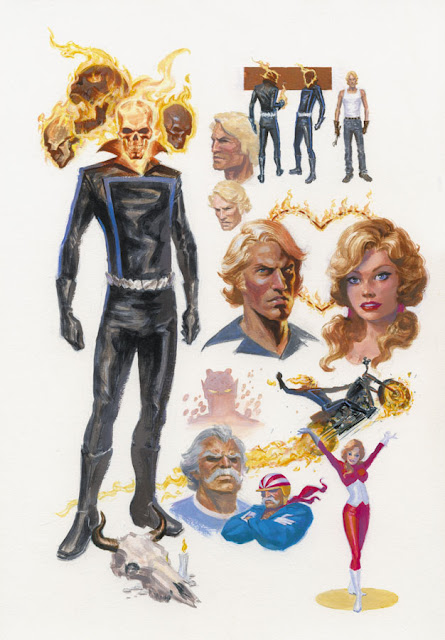 |
|
Ghost Rider Studies. 2006. Acryla Gouache on bristol board, 8.5 × 12″.
|
After painting Mythos: Hulk completely in grayscale, I felt the urge to return to color for my next project, Mythos: Ghost Rider. I had gotten fairly comfortable with Acryla Gouache on board, so when I saw the full-spectrum set of 12 colors at Pearl Paint in Chinatown, I couldn’t resist. You’ve all had that feeling: if you just got this set of paints, or that brush, your mad skills will have the chance to truly shine.
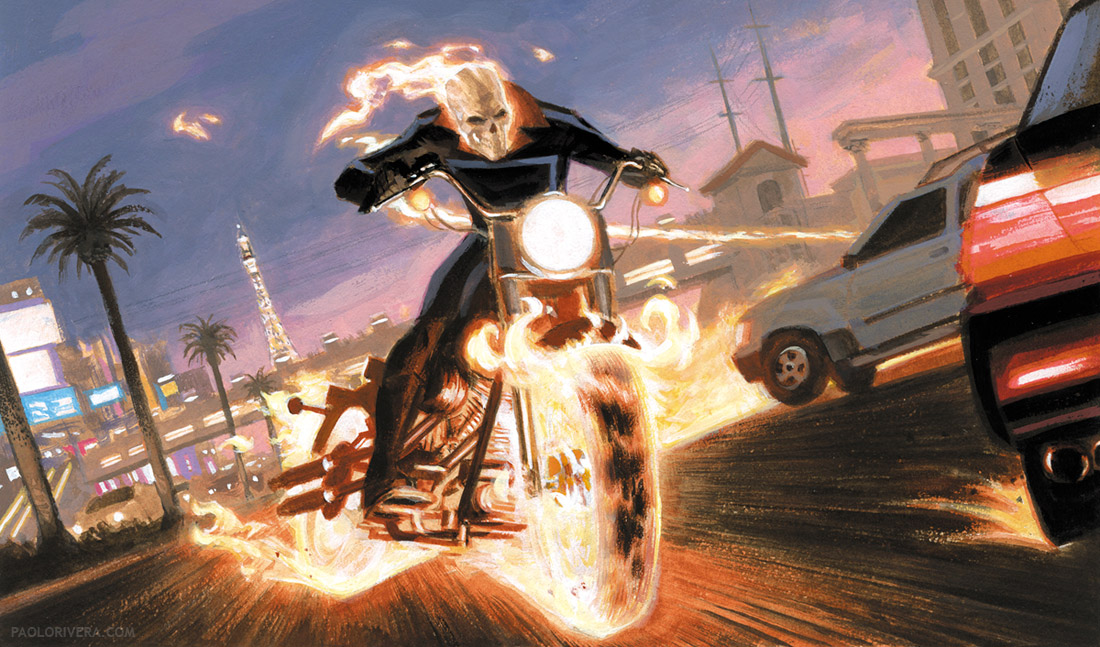 |
|
Mythos: Ghost Rider, Page 23. 2006. Gouache and acrylic on bristol board, 8.5 × 12″.
|
For once, it was sort of true. My approach to oil was mostly opaque, meaning that nearly every color that appeared in the final painting had to be painstakingly mixed prior to application. Working semi-transparently meant I had more freedom to modulate color on the fly, adding more or less water to achieve a wide array of value and saturation with just one pigment. Because this sped up the process, my mark-making become a little more natural and confident.
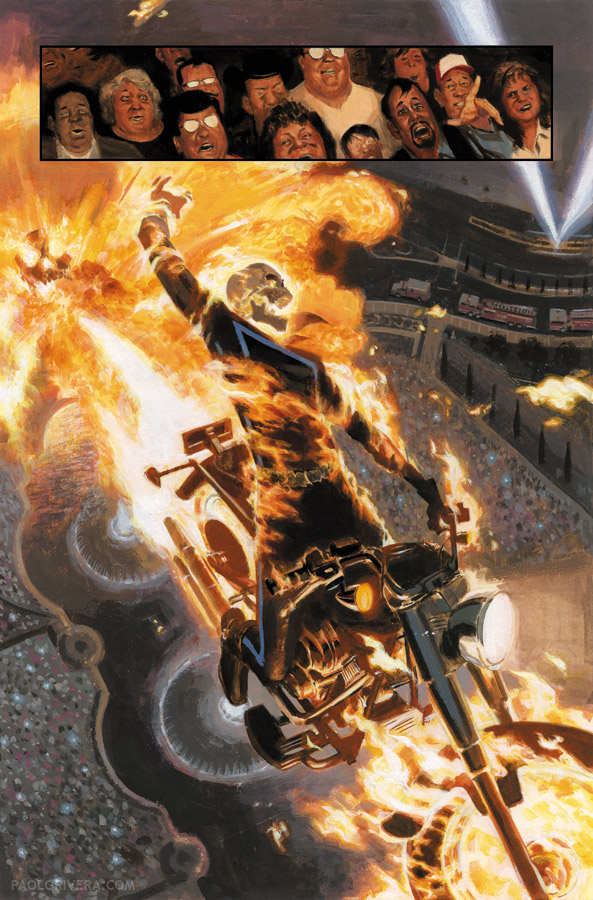 |
| Mythos: Ghost Rider, Page 21. 2006. Gouache and acrylic on bristol board, 8.5 × 12″. |
I struck gold once again, this time at the Dick Blick in SoHo. The Masterson Sta-Wet Palette had always called to me from the aisles, but I finally had a good excuse to give it a try now that I was a dedicated acrylic painter (Acryla Gouache is an acrylic that dries to a matte finish). I now own 3 of the palettes, one of each size. The key to the system is a wet sponge that rests below a sheet of semi-permeable paper. This, coupled with the lid, can keep paint fresh for days, even weeks. I had long ago rigged a somewhat similar contraption that involved wet paper towels and a Ziploc bag, but having a mixing surface that stands up to a palette knife makes all the difference.
But aside from the shift in accessories, I had undergone a mental shift as well. By this time, I had built up a side gig doing watercolor commissions at comic conventions. This side-income had the side-benefit of reintroducing me to transparent color mixing. At this stage in my career as a comic book painter, one of my primary concerns was how to distinguish myself from Alex Ross, who was (and is) a huge influence on me. You’ve probably heard of him. He works in watercolor and gouache, laying transparent color over a monochromatic underpainting. I get this process — it’s how my brain first learned (circa high school) to achieve the desired results.
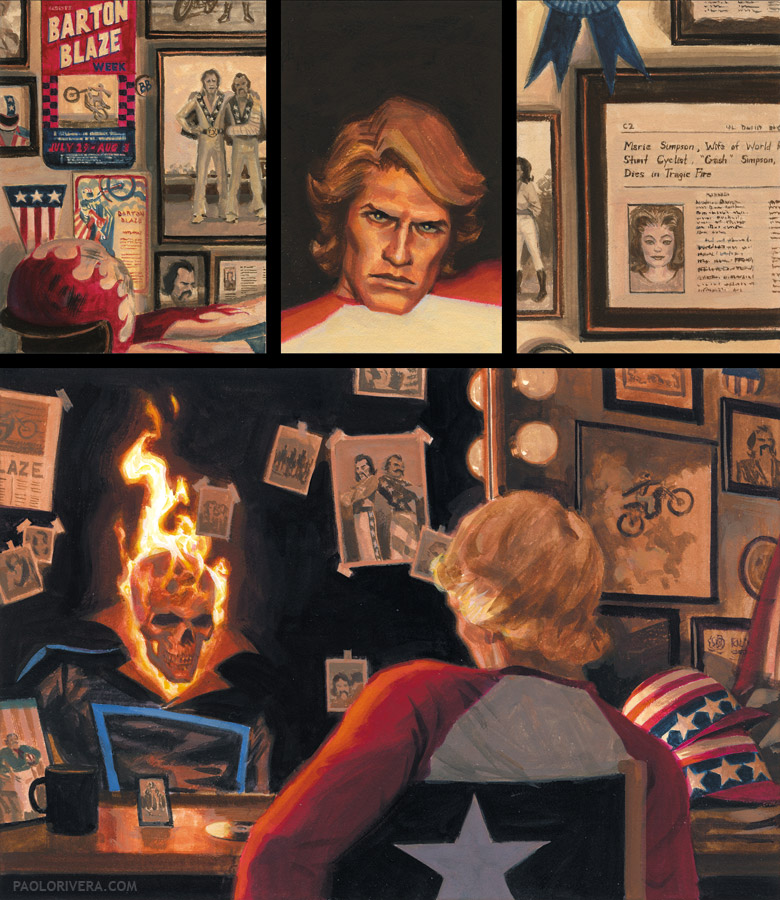 |
| Mythos: Ghost Rider, Page 4. 2006. Gouache and acrylic on bristol board, 8.5 × 12″. |
Now that I wasn’t worried about aping his style, I felt free to employ his transparent layering process, adding opaque notes where I saw fit. As time went on, my paint application would become increasingly transparent, especially as, years later, I moved on to traditional gouache with just hints of watercolor and acrylic. Having used all 3 media extensively, I’m familiar with the strengths of each, and use them accordingly, sometimes mixing them on the palette as well as the painting.
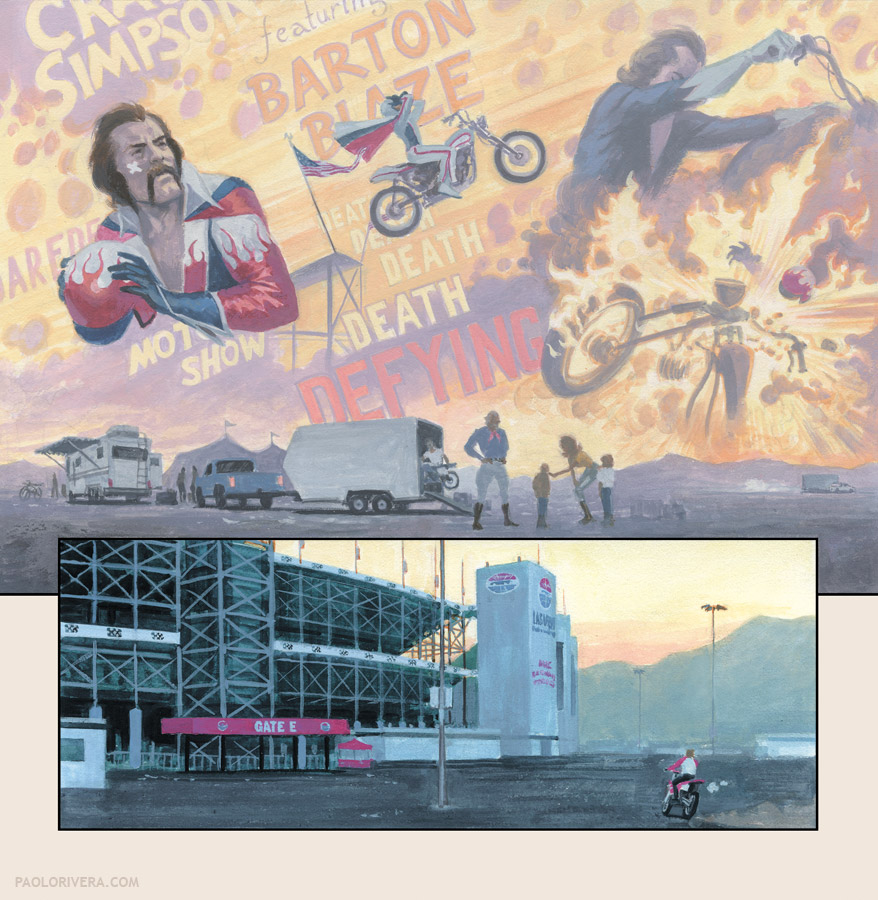 |
| Mythos: Ghost Rider, Page 4. 2006. Acryla Gouache on bristol board, 8.5 × 12″. |
That being said, Acryla Gouache has a couple of unique advantages. It’s particularly well-suited for complicated subjects, such as architectural details and cluttered spaces. It has great covering power and, when dry, can even be glazed. For the same reasons, it’s great for lettering and graphic elements, an essential component to any comic. I’ve never lettered any of my own work, but I’ve always tried to do my own sound effects. (I even use it as white out for my inked work.)
 |
| Mythos: Ghost Rider, Page 1. 2006. Acryla Gouache on bristol board, 8.5 × 12″. |
As always, my creative approach is a very structured process that involves a gradual refining of ideas and subject. This is the result of years of deadlines, coupled with editorial review, but it works well and I haven’t found a better way of gettings things done in a timely manner. Since I can paint directly over the white surface of my drawing, no transferring or projection is required.
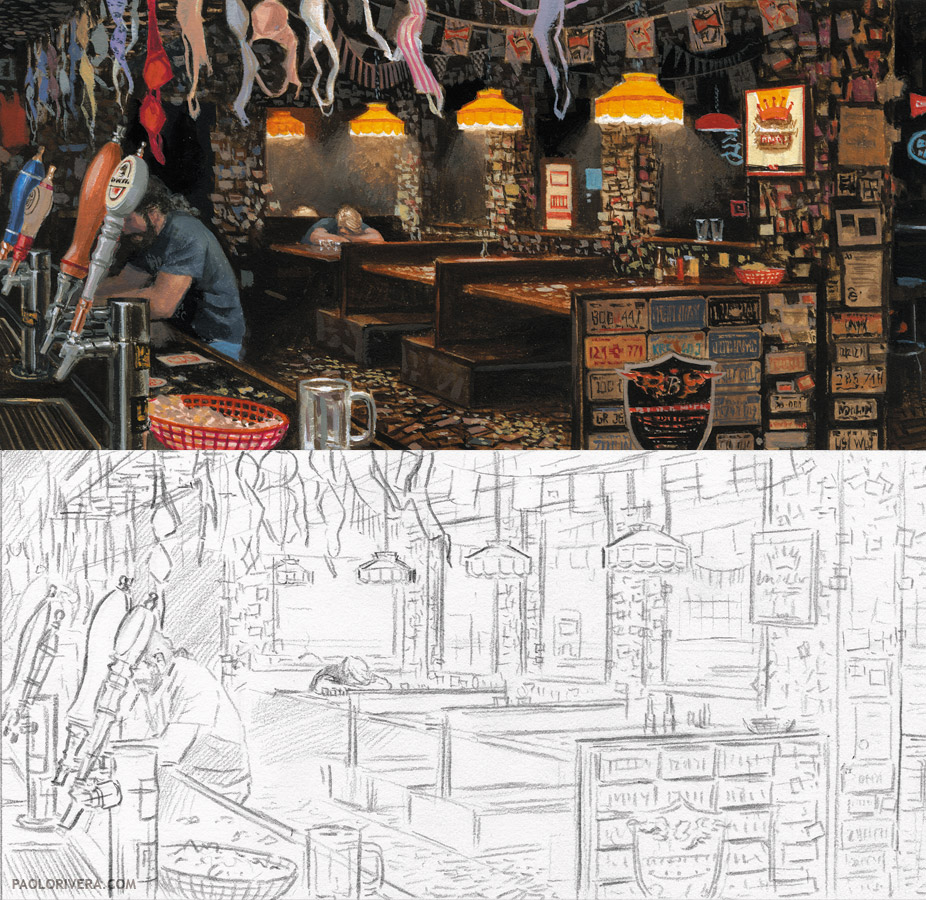 |
| Paints and Pencils |
I prefer to leave the underlying drawing unfixed so that paint can seep into the bristol board and take hold. One of the reasons I eventually switched to straight gouache (as opposed to Acryla Gouache) was because the acrylic seals the paper after several passes, even when watered down. I prefer to have the surface act as a sponge, soaking up each stroke as it’s applied. This has resulted in many of my originals being mistaken as prints.
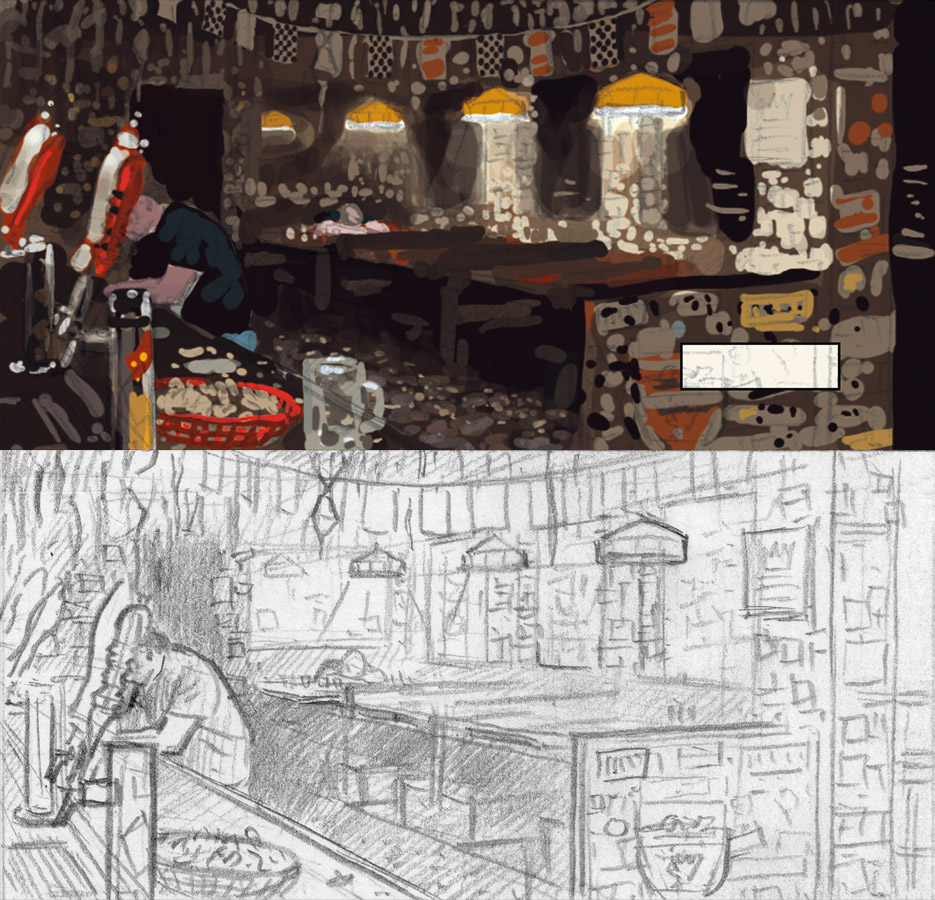 |
| Digital Color Study and Pencil Layout |
This particular scene is based on a famous biker bar in Daytona Beach called the Boot Hill Saloon. That’s my Dad at the bar, always willing to help me with research. The bras hanging from the ceiling were also inspired by reality. You can’t really tell here, but the floor is covered in peanut shells.
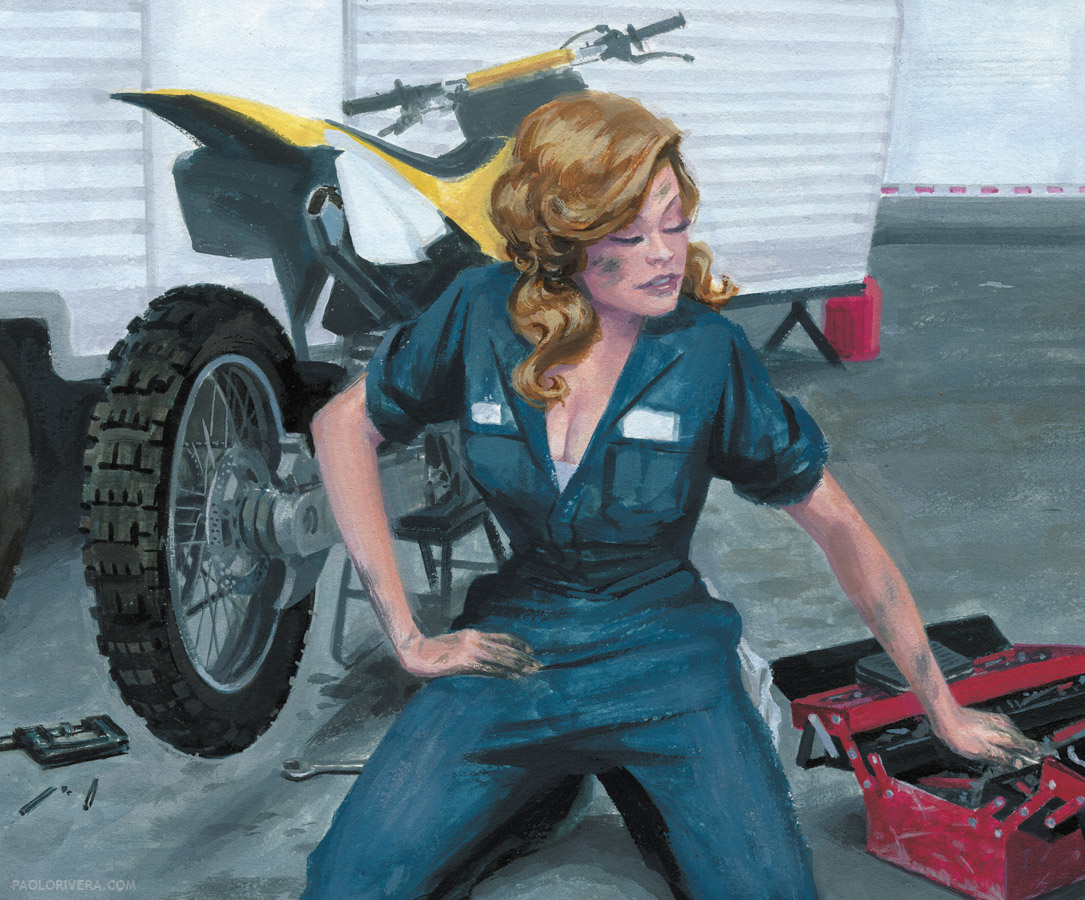 |
| Mythos: Ghost Rider, Page 5. 2006. Acryla Gouache on bristol board, 8.5 × 12″. |
In addition to reference photos, I also made 3 maquettes for the main characters (they’re a fantastic way to procrastinate while still getting something done). For Ghost Rider, I even made a little hinge for the jaw to move. I still make maquettes for myself, but now they’re mostly digital. If there’s one piece of advice I have for aspiring comic book artists, it’s that you must sculpt. There’s no faster way to learn anatomy.
There’s plenty more Ghost Rider at my blog:
Videos of me painting page 10
Page 5 Step-by-Step
Cover Step-by-Step
Skull Maquette
Roxanne Maquette
Johnny Blaze Maquette


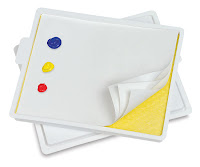
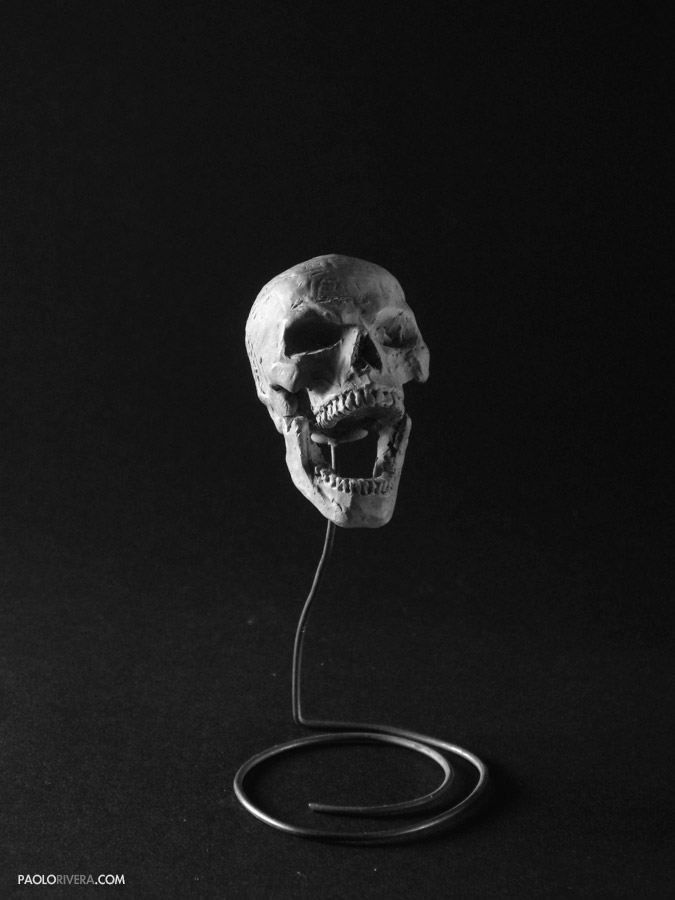
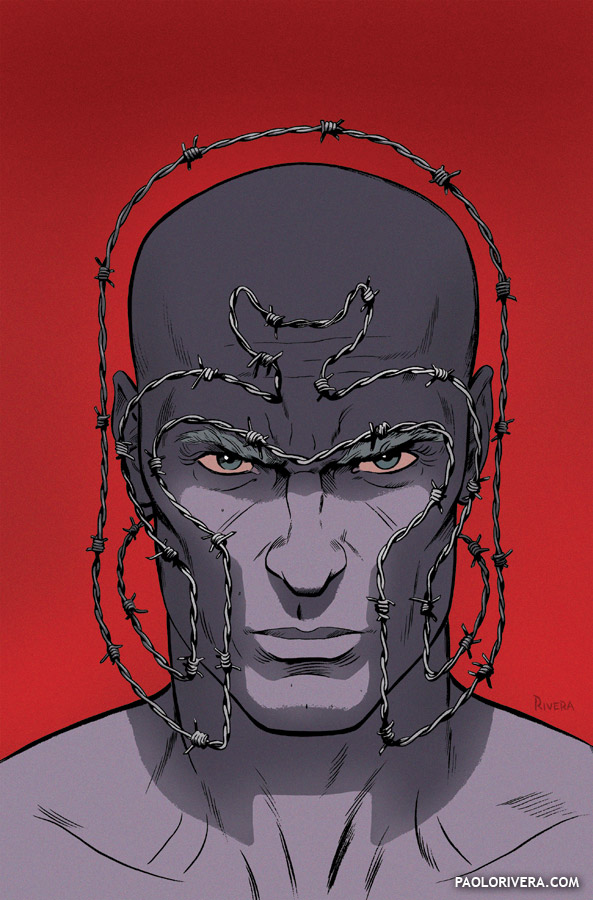
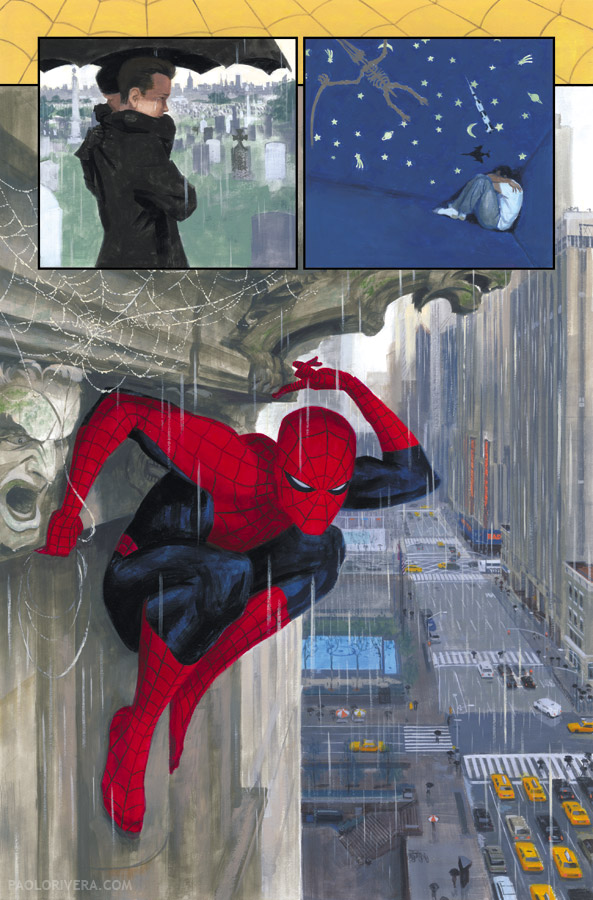
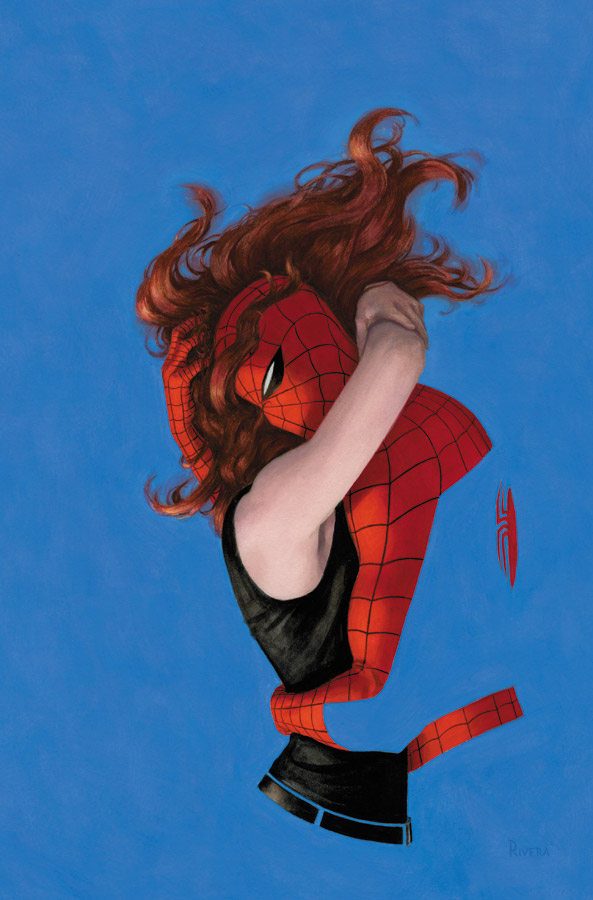
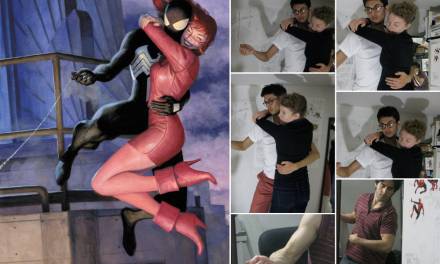
Fantastic as always! I already use Sculptris (a tip that I saw on your blog some time ago) for light and shadow reference. Thanks for sharing your process.
Great post. Thank you.
Very nice work! I have to get this!
What kind of clay are you using to sculpt?
Thanks, everybody!
Jeff, the skull is made out of Super Sculpey Firm, a grey polymer clay that hardens when baked in a conventional oven (or with a heat gun). I did a post about the tools and process here.
Those gouache paintings are AWESOME!!!! People who have the ability to use gouache in that manner will always amaze me because it is such a difficult (well, to me anyway) medium to work with. Very cool! Thanks for sharing your process.
Thanks, Allison! Once I get through all the media I've used over the years, I want to write a post on the nitty-gritty of paint handling. The secret to gouache (at least for me) is all about water.
So much detail! I wouldn't even know where to begin with a painting like this.It's wonderful and has a great sense of depth.
Hawaiian Paintings
Thanks! It helps having a script.
SEE ORIGINAL GHOST RIDER BIKE FROM THE MOVIE http://www.youtube.com/watch?v=LVQ6rxirl5o&feature=youtu.be
thanks for sharing...